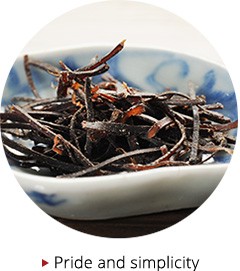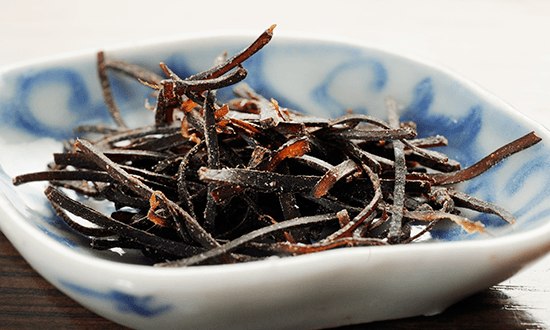Kyoto winter indulgence
Fresh ingredients minimally altered. Seasons aesthetically expressed. Kyoto cuisine conveys the heart of Japanese culture. As the year draws to a close, return to where washoku (Japanese cuisine) originated. Kyoto, where fine restaurants are capturing the world's imagination.
 Hyotei Main Branch
450 years of innovation
Hyotei Main Branch
450 years of innovation
 Kappo Chihiro
Consummate minimalism
Kappo Chihiro
Consummate minimalism
 Kyoboshi
World renowned tempura
Kyoboshi
World renowned tempura
 Fugu Ryori Tomoe
Exquisite aged fugu
Fugu Ryori Tomoe
Exquisite aged fugu
 Sushi Matsumoto
The best of Tokyo and Kyoto
Sushi Matsumoto
The best of Tokyo and Kyoto
Hyotei Main Branch瓢亭 本店
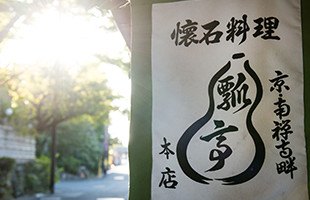
Phone: 075-771-4116
- Address:
- 35 Nanzenjikusagawa-cho, Sakyo-ku, Kyoto-shi, Kyoto
- Open:
- 11:00 – last order 19:30
Morning rice porridge served
From July 1 to August 31 08:00 – 10:00
Uzura rice porridge December 1 to March 15 11:00 – 14:00 - Closed:
- Irregular
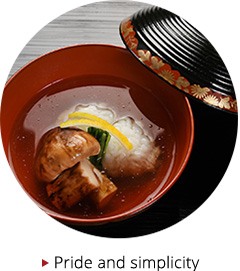
Pride and simplicity

The restaurant is always fine-tuning its dishes. The previous owner, for example, was the first to make dashi from bonito flakes and the current owner has minutely adjusted the composition. He explains, "I make subtle adjustments, but in a natural way that guests don't notice". All they notice is the exquisite flavor, impeccable presentation, refined service and unforgettable atmosphere.

Hassun (appetizer) of Hyotei egg, ikura (salmon roe), grilled barracuda sushi, and a chestnut and gingko nut simmered in honey and sake.

Sliced and folded seabream from Akashi serves as the simply perfect single-fish sashimi dish.
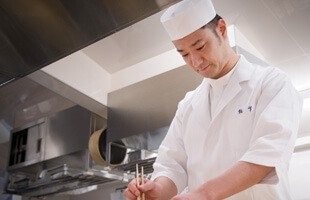
"I'm often invited to give lectures overseas," says Takahashi, who applies what he learns abroad to his dishes.

Five Japanese style rooms with names like "Kuzuya" and "Tansentei" are available for private groups.

The garden, designed to fully express the four changing seasons, includes a pond drawing water from Lake Biwa.
450 years of innovation
Hyotei was described as a scenic landmark in the 1864 Karaku Meisho Zue illustrated guidebook. Now the restaurant is acclaimed by connoisseurs worldwide for its soft boiled eggs and morning rice porridge. Many visitors are overwhelmed by its long history and authentic ambience. But the heart of the restaurant is its historic commitment to "provide tastes and services that fulfill the needs and desires of customers that change with the times," explains 15th generation owner Yoshihiro Takahashi.
For example, the seabream sashimi may meet all the unwritten rules that Hyotei has followed for hundreds of years. It is only made from live 1.8 - 2.5 kilogram female seabream caught in Akashi. And it is only served in the hegi (folded cut) style with Tosa soy sauce. But the 15th generation owner also adds "tomato soy sauce", his original contribution.
Takahashi nonchalantly remarks, "in the modern age, people prefer delicate fragrances and tastes". Indeed, the sauce's light texture and refreshing acidity bring out the flavor of the seabream. Still, the dish is Hyotei through and through.
At Hyotei, it has always been this way. The restaurant was the first in the Gion district to introduce hori-gotatsu (sunken kotatsu tables) and the previous proprietor became the first in the restaurant's history to make dashi from bonito flakes. There is no pressure at Hyotei to strictly maintain established traditions. Nor is there any effort to surprise guests with special service. New ideas have always been introduced in a humble effort to satisfy customers. For this reason, the business has continued for centuries without interruption and all changes have naturally complemented existing dishes and services. The history of Hyotei was built on hospitality that changes gradually every day. It's an unforgettable experience that guest have treasured for generations.

Phone: 075-771-4116
- Address:
- 35 Nanzenjikusagawa-cho, Sakyo-ku, Kyoto-shi, Kyoto
- Open:
- 11:00 – last order 19:30
Morning rice porridge served
From July 1 to August 31 08:00 – 10:00
Uzura rice porridge December 1 to March 15 11:00 – 14:00 - Closed:
- Irregular
Kappo Chihiro割烹 千ひろ

Phone: 075-561-6790
- Address:
- 279-8 Gionmachi Kitagawa, Higashiyama-ku, Kyoto-shi, Kyoto
- Open:
- Lunch 12:00 - 13:00 *Reservations by previous day
Dinner 17:00 – last order 20:30 - Closed:
- Mondays

Chef Nagata's flavorful grilled eggplant impeccably prepared and accompanied by original sesame and ginger soy sauce.
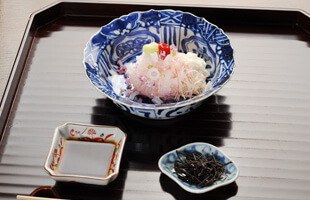
Fresh pike conger swim bladder garnished with plum meat and wasabi and served with strips of salted kelp.

After training at Tsujitome, owner Nagata worked with his elder brother at Chihana for 26 years.
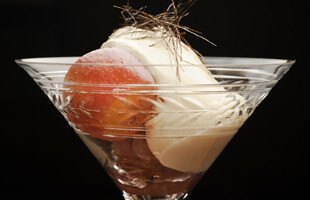
Pione and raw yuba (tofu skin), one of several dishes at Chihiro featuring casually concealed fruit.

"Keeping things simple requires authenticity," chef Nagata explains. His pottery includes antique Kenzan Ogata masterpieces.
Consummate minimalism
Some connoisseurs may recognize the simple grilled eggplant and hamo (pike conger) sashimi with strips of salted kelp from the menu at Michelin 3-star restaurant Chihana, frequented by legendary French chef Paul Bocuse. This should come as no surprise, as Kappo Chihiro owner Hiromichi Nagata is the second son of Chihana owner Motoo Nagata.
Initially trained at famed Tsujitome restaurant, chef Nagata then served as a chef at Chihana until launching his own restaurant in 2001. His culinary style clearly carries on the family tradition. He gives carefully selected ingredients only minimal treatment, devoting himself fully to bringing out their flavor. The "aesthetics of subtraction" is common to all Kyoto cuisine, but Kappo Chihiro takes the quest to extremes.
The grilled eggplant, for example, is "prepared without touching water," says Nagata, "I simply peel off the skin after grilling is complete". Not a single grain of salt touches the eggplant, either. This may seem excessive until you smell the captivating aroma as the dish arrives at your table and take a delectable bite of its sweet, fruitlike flesh. Through nothing more than expert grilling, its wonderful flavor is heightened to thrill the guest.
Chef Nagata employs minimalism not to surprise or be trendy, but to genuinely bring out the strengths of every ingredient. Success requires a chef possessing exceptional culinary skills and an eye for the best ingredients. It's the ultimate distillation of Kyoto cuisine.

Phone: 075-561-6790
- Address:
- 279-8 Gionmachi Kitagawa, Higashiyama-ku, Kyoto-shi, Kyoto
- Open:
- Lunch 12:00 - 13:00 *Reservations by previous day
Dinner 17:00 – last order 20:30 - Closed:
- Mondays
Kyoboshi京星

Phone: 075-551-2303
- Address:
- 1F Futaba Building, Hanamikoji Sueyoshi-cho Higashiiru, Higashiyama-ku, Kyoto-shi, Kyoto
- Open:
- 18:00 – last order 20:00
- Closed:
- Sundays
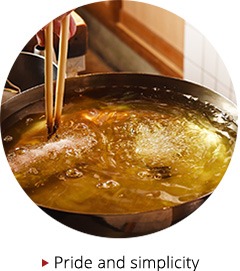
Pride and simplicity
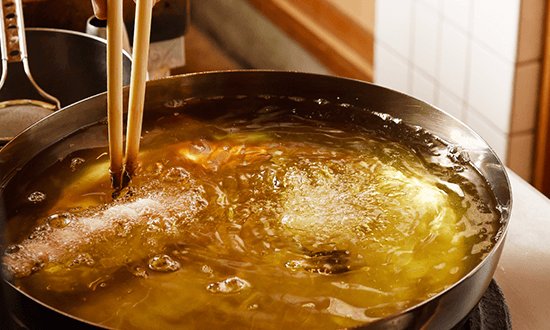
The secret to Kyoboshi's incredibly light tempura lies in the egg-free batter and an original blend of oil that includes no sesame oil and never feels heavy in the stomach. Frying tempura with egg-free batter requires delicate temperature control, perfect timing and other techniques that Sakakibara has clearly mastered.

The menu consists of a single course dinner with 17 to 18 tempura items served fresh by Mr. and Mrs. Sakakibara to match the pace of guests.

Sweet and delicious, the extremely popular carrot tempura is playfully presented.

Crispy outside and juicy inside, the guji (tilefish) tempura satisfies demanding Kyotoites particular about guji.

Braided fish tempura is served with homemade salt, freshly squeezed citrus juice and grated daikon (Japanese radish).

The shop has only 10 counter seats but always keeps one seat vacant to give guests a sense of extra space and relaxation.
World renowned tempura
The tempura at Kyoboshi is surprisingly light and crispy. Ingredients are expertly prepared to bring out their best taste. The carrots, for example, are so sweet, without earthiness, that even those who don't like carrots enjoy the carrot tempura.
No seasonings are added to the ingredients before frying. "Some guests tell me they feel cheated," laughs owner chef Toshinori Sakakibara. But they always love the flavor. Such culinary magic requires a sound tradition carried over from many generations.
The oil is an original Kyoboshi blend without the sesame oil typically used in East Japan. The batter is egg free. These are just some of the secrets that explain why guests can enjoy 17 to 18 tempura items without any heartburn or sense of heaviness. The cooking method was devised by the previous owner right after WWII. But why would anyone make such delicate tempura?
"Kyoboshi was founded right here in Gion, and my grandfather strove to make tempura appropriate for the hanamachi (Geisha-house district). The taste hasn't changed at all over the years and it still pleases local palates," shares chef Sakakibara, who broke from tradition to serve all tempura in bite-sized dimensions.
Since its founding, Kyoboshi restaurant has focused on satisfying the particular tastes of local customers. This approach led to the creation of distinctive fare that has recently garnered worldwide acclaim. But Kyoboshi continues to serve every customer, from near and far, with the same familiar warmth.

Phone: 075-551-2303
- Address:
- 1F Futaba Building, Hanamikoji Sueyoshi-cho Higashiiru, Higashiyama-ku, Kyoto-shi, Kyoto
- Open:
- 18:00 – last order 20:00
- Closed:
- Sundays
Fugu Ryori Tomoeふぐ料理ともえ
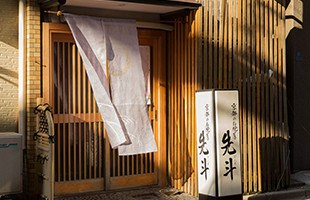
Phone: 075-491-6607
- Address:
- 27-4 Murasakino Shimomikoshi-cho, Kita-ku, Kyoto-shi, Kyoto
- Open:
- 17:00 - last order 21:30
Reservations are generally required three days in advance. - Closed:
- Irregularly and from June to August
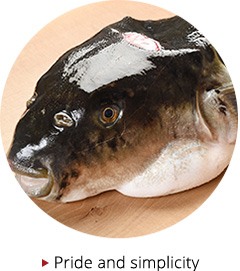
Pride and simplicity
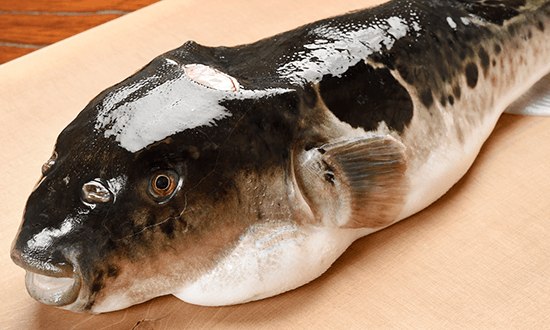
Chef Kamei explains that the flavor of fugu can be exceedingly enhanced through practiced knowledge and preparation. This includes a three-day aging process in which portions are removed, prepared and served at just the right time. Fugu Ryori Tomoe guests discover the amazing flavor firsthand.
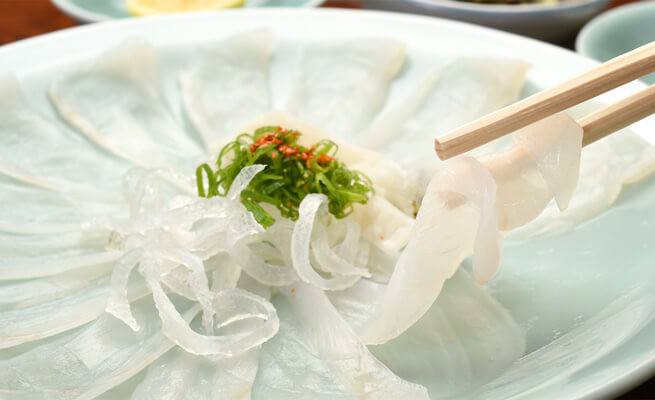
Tessa (fugu sashimi) presented in chrysanthemum form. Each slice is wide on one end and thin on the other for easy dipping in ponzu (citrus vinegar) sauce.

Fugu parts not commonly served are grilled and seasoned with salt and ichimi (red pepper powder).

Nikogori (jelly broth) brings out fugu's flavor. It's stiff enough to eat with chopsticks but melts in your mouth.
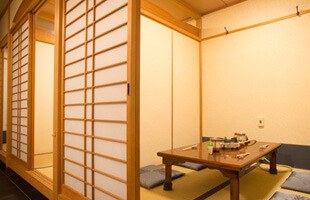
Guests appreciate the casual, unpretentious atmosphere and warm hospitality of the knowledgeable proprietress.

Owner Kamei is Chairman of the Fugu Association of Kyoto Prefecture and generously shares his expertise with members.
Exquisite aged fugu
Fugu Ryori Tomoe owner Kazuhiro Kamei is the uncontested champion of torafugu (tiger puffer) cuisine. But it wasn't always that way. He recalls being challenged by guests with traditional Kyoto preferences to provide more than just exceptional freshness and impeccable presentation. Their friendly prodding pushed him to experiment and refine his craft.
Together with his father, the founder who opened Fugu Ryori Tomoe in 1969, chef Kamei studied fugu (puffer fish) inside and out, learning new cooking techniques through trial and error and finally arriving at solutions that fully satisfied the palates of epicurean Kyotoites.
One of these solutions is a special aging method in which each fugu is gradually dismembered over time so that every portion is served when it is most richly flavorful.
When guests dine on tessa (sashimi) arranged as a single-layered chrysanthemum, chef Kamei encourages them "to chew each slice at least 30 times before swallowing" to fully savor the flavor. His fugu slices are larger and thicker than usual and guests quickly discover that the flavor spreads wonderfully through the mouth as they chew.
"Fugu is profound," Kamei says with a smile. But he takes his work seriously, never compromising on preparation of the fish he has dedicated his entire life to serving in the best possible light. Practice makes perfect and his decades of experience have brought guests unprecedented pleasure.

Phone: 075-491-6607
- Address:
- 27-4 Murasakino Shimomikoshi-cho, Kita-ku, Kyoto-shi, Kyoto
- Open:
- 17:00 - last order 21:30
Reservations are generally required three days in advance. - Closed:
- Irregularly and from June to August
Sushi Matsumoto鮨まつもと

Phone: 075-531-2031
- Address:
- 570-123 Gionmachi Minamigawa, Higashiyama-ku, Kyoto-shi, Kyoto
- Open:
- Lunch 12:00 - last order 13:30
Dinner 18:00 - last order 20:00 - Closed:
- Tuesdays and lunches on Wednesdays
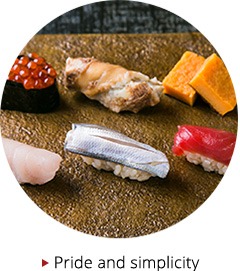
Pride and simplicity

Chef Matsumoto pays meticulous attention to every ingredient and seasoning. His vinegars and soy sauces are blends of products found nationwide. His rice is seasoned with salt and an original blend of light and heavy red vinegars. When combined with sushi toppings, the taste is heavenly.

"My shop is simple. We serve only Edomae (old Tokyo style) sushi and appetizers. But I strive to please every guest in every detail from the amount of salt to the amount of rice in each serving," explains Matsumoto. His restaurant is limited in scope but accommodating in spirit.
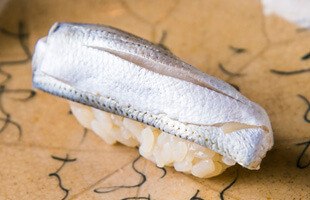
Kohada (spotted sardine), a signature Edomae sushi topping, is vinegared for a day. The rice is neatly formed but collapses in your mouth.

Maguro (tuna) marinated in sauce for 10 minutes. The length varies depending on the fat content and cut.
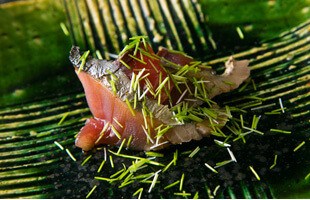
Tataki (seared) autumn bonito appetizer sprinkled with menegi (spring onion shoots) is replaced by ankimo (monkfish liver) or simmered oyster in winter.

The ambience is tranquil and modern with a small Kyoto-style garden adding light and a sense of open spaciousness.
The best of Tokyo and Kyoto
"I want to spread authentic Edomae (old Tokyo style) sushi in Kyoto," states chef Daisuke Matsumoto with conviction and pride. Born in the Kanto region, and specially trained in Tokyo, he considered launching his first business in Ginza or Nishi-Azabu, but found himself enchanted by Kyoto's opulent atmosphere and decided to build his future here.
The road he chose was deeply influenced by early experiences at Sushi Shimizu in Shimbashi, Tokyo. "After training at the restaurant and becoming a professional sushi chef, I returned as a guest and was deeply moved by everything from the quality of the ingredients to the preparation techniques, which were obvious in every bite. It was truly an electrifying experience. Every detail was perfected to deliver the best possible taste under any condition," says Matsumoto.
Driven by this experience, he refuses to compromise. Even when he knows he won't make a profit, he procures top-class ingredients "to bring others the fascination I discovered at that time," he explains. His rice is a mixture of the previous and current year's harvests with an original blend of red vinegar. The amount of salt is adjusted depending on ever-changing conditions. It's this kind of subtle control that makes Edomae (old Tokyo style) sushi so special. For tsumami (appetizers), Matsumoto selects ingredients that prepare guests for the sushi to come.
He purchases most ingredients from Tsukiji Market in Tokyo. However, items such as tako (octopus), anago (conger eel), tai (seabream) that becomes nicely firm in winter, and highly seasonal ingredients like winter sawara (Spanish mackerel), are purchased directly from Akashi. "The ambience of my shop and the taste of my sushi represent the best of Kyoto and Tokyo," Matsumoto shares with a boyish grin.

Phone: 075-531-2031
- Address:
- 570-123 Gionmachi Minamigawa, Higashiyama-ku, Kyoto-shi, Kyoto
- Open:
- Lunch 12:00 - last order 13:30
Dinner 18:00 - last order 20:00 - Closed:
- Tuesdays and lunches on Wednesdays
*Articles are written based on information available at the time of publication.
More restaurants



